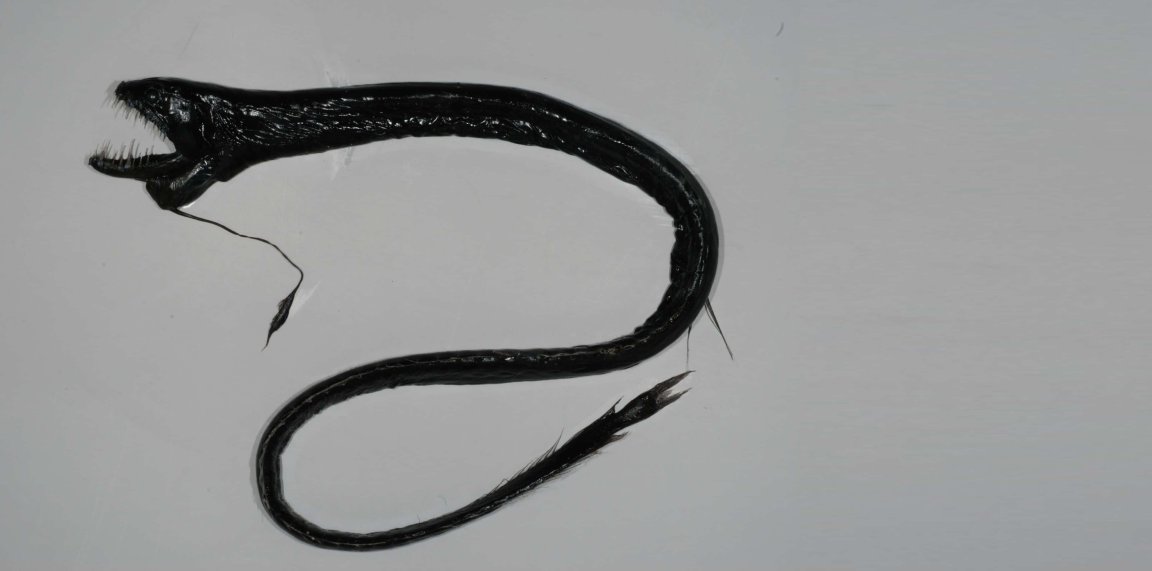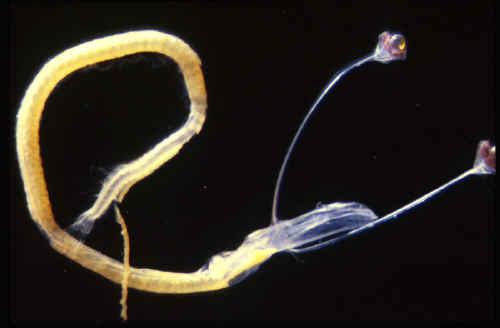
The ocean is, in many ways, another world. It is a place that is quite different from the Earth that we know and experience on a day-to-day basis. Case in point: Meet the black dragonfish. This little creature is also known as Idiacanthus atlanticus, and to be frank, the little guys look rather terrifying.
In fact, they look remarkably like the creatures from the Alien movies.
If you aren’t farmilar with the series, the monster (or rather, alien) from the movie was developed by H.R. Giger, a Swiss artist. A new video essay explores how the artist’s experiences and background in design came together to shape the appearance of the creatures, and the film gives you a remarkable look at how our technologies allow us to create fantastical and terrifying creatures…creatures that sometime mimic what we see in real life.

Fortunately, unlike the alien seen above, you really don’t have much to fear from the black dragonfish, as they are, well, little. Also, they live deep in the ocean, far deeper than your average human will ever venture.
The females are some 15 inches long (40 cm). That may sound like a fairly good size, but as you can see below, lot of their length comes from their long, tail-like structure. Their mouths, by comparison, are rather little, and they use them to eat other fish.

The males barely reach 2 inches (5 cm) in length and have a number of other notable differences. They don’t have any teeth or the long structure extending from their chin, and they are brown and have no digestive system…essentially, they look nothing like the female dragon fish.
The distinct differences between the two sexes is known as “sexual dimorphism,” and it is believed that the males’ only purpose is reproduction (after all, there isn’t a whole lot that you can do with no digestive system).
Black dragonfish can produce their own light, which is actually rather common in creatures that live in the black recesses of the ocean. You can find these tiny terrors more than a mile beneath the waters (2,000 meters). However, unlike most bioluminescent predators, which use their light primarily to attract prey, the black dragonfish can also see its own light.

Ultimately, because it can perceive a red as well as blue-green light, the creature can hunt down its prey (producing and seeing its own light gives it a distinct ocular advantage). Interestingly, the light produced by the fish is often such a long wavelength that it is nearly in the infrared part of the spectrum. Consequently, the light is barely visible to the unaided human eye.
If these creatures weren’t already interesting enough, in the larva stage, the eyes of the larvae appear as long stalks that dangle out of the body. Eventually, they retreat as the fish ages and reaches maturity.